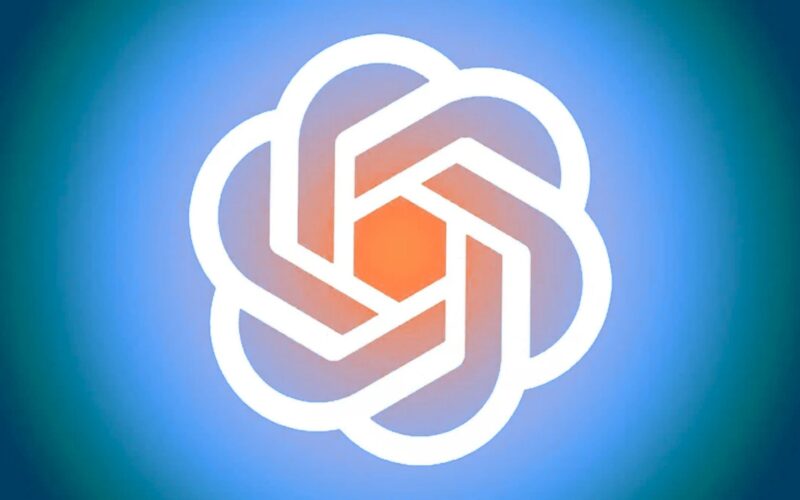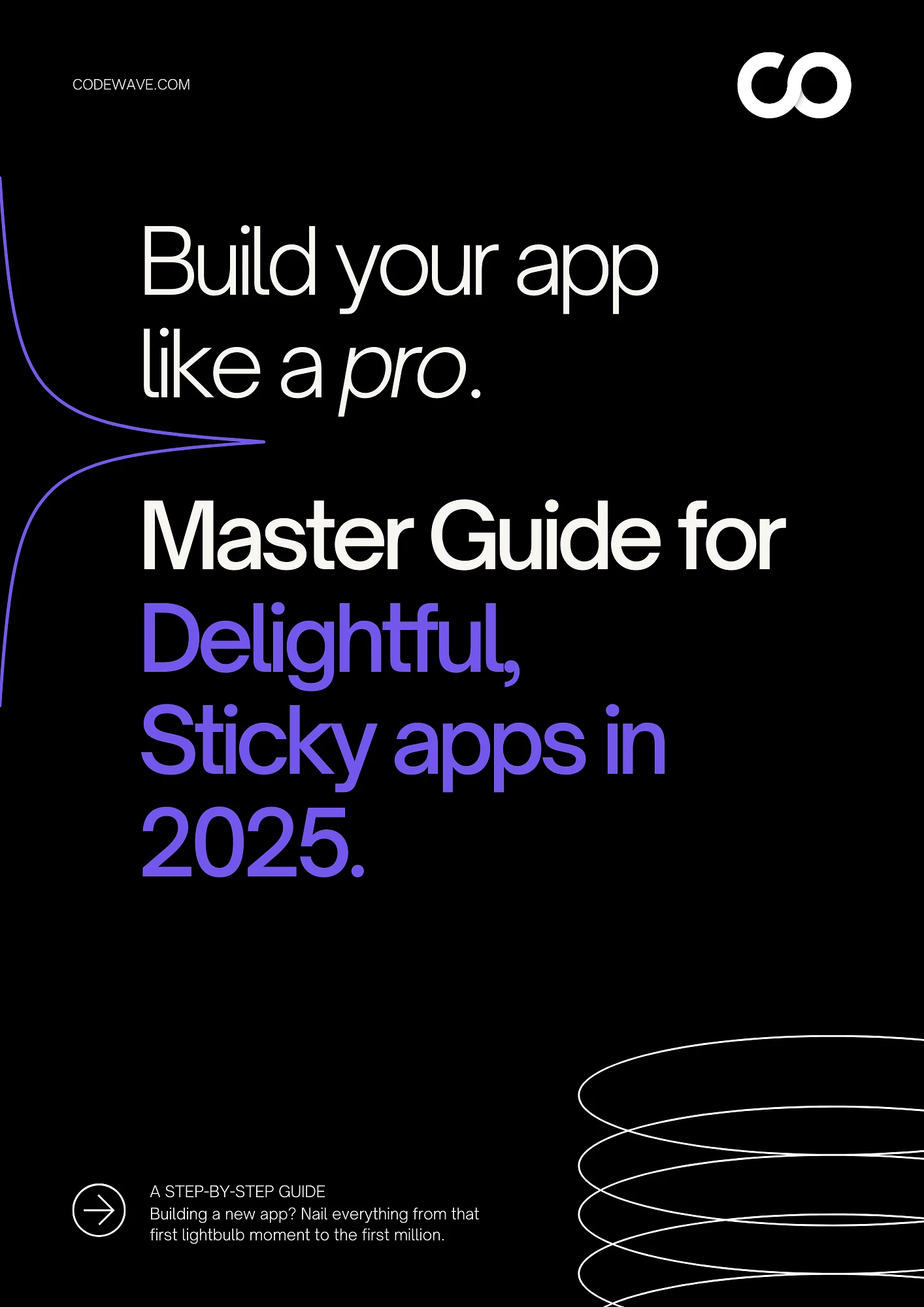Many companies are racing to adopt generative AI, yet most struggle to see real value from their investments. According to McKinsey, while 88% of organisations use AI in at least one business function, only 39% report a significant impact on their earnings.
So why is this happening? The problem often lies in the rush to select and deploy a model without first laying the groundwork for a clear, structured implementation framework. This oversight leads to missed opportunities and inconsistent returns.
What businesses need is a practical, outcome-driven GenAI framework that aligns with use cases, data readiness, governance, and scalability.
In this blog, we’ll explore why such a framework is essential, the top models for 2026, and the steps to successfully implement GenAI in your business.
Key Takeaways
- GenAI adoption in 2026 requires a structured framework aligned with business goals, data readiness, and strong governance.
- Key frameworks include Use-Case Maturity Framework (UCMF), MLOps, and Responsible AI Implementation Framework (RAIF) for streamlined, scalable deployments.
- Australian businesses face challenges such as a skills shortage, fragmented data, and complex regulatory demands, but there are also opportunities in automation and customer experience transformation.
- Successful implementation relies on selecting the right model, continuous testing, and refining through feedback loops.
What Makes a GenAI Implementation Framework Effective in 2026?
As businesses rush to adopt generative AI, many overlook the importance of a structured implementation framework. The McKinsey Global AI Survey found that 28% of organisations with CEO-led AI governance see significantly better value from their AI investments.
This underscores the need for strategic oversight. Without a clear framework, even the best AI models can fail to deliver.
1. Use-Case Prioritisation
Rather than adopting AI for every function, businesses must focus on use cases that align with strategic goals. Prioritising high-impact areas—whether it’s customer service automation or decision-making enhancements—ensures that AI delivers measurable returns.
This approach mirrors findings from MIT Sloan Management Review, which highlights the importance of choosing when to use GenAI vs. traditional ML models.
2. Data Layer Readiness
AI models are only as good as the data they are trained on. Data readiness addresses quality, consistency, and accessibility, making sure that data flows smoothly across systems and is clean, structured, and ready for AI consumption.
A framework that includes proper data preparation can avoid performance issues stemming from messy or siloed data.
3. Security by Design
As AI becomes integral to business operations, security must be embedded from the start. From protecting sensitive data to ensuring compliance, security by design safeguards against breaches and misuse.
In fact, AI governance frameworks are becoming essential in regulated industries, where transparency and accountability are key.
4. Multi-Model Deployment
A single AI model isn’t enough for complex business needs. Frameworks that deploy multiple models tailored to different tasks—like customer support, predictive analytics, or real-time decision-making—are far more flexible and scalable.
This multi-model approach enables businesses to address a broader range of use cases without compromising performance.
5. Feedback Loops & A/B Testing
AI is not a set-it-and-forget-it solution. Continuous improvement through feedback loops and A/B testing ensures that models evolve as data and business needs change.
This dynamic approach keeps your GenAI systems aligned with real-world demands, preventing performance degradation over time.
Tools to Power GenAI Frameworks
Supporting these frameworks are essential tools that ensure smooth, scalable AI deployments:
- Vector Databases: These databases enable fast similarity searches in unstructured data, such as text or images, making them essential for AI systems like LLMs.
- Orchestration Tools: Automate workflows across models and applications, ensuring seamless integration and efficiency across AI systems.
- Observability Dashboards: These dashboards allow real-time tracking of AI performance, helping teams monitor and optimise models effectively.
Looking to simplify your business workflows and drive efficiency? With Codewave’s GenAI Development Services, we help you automate tasks like customer engagement, report generation, and data analysis.
Get in touch to explore how we can help streamline your processes and accelerate growth.
Now that we have a clearer understanding of what makes a GenAI implementation framework effective, let’s explore the specific frameworks that decision-makers are adopting in 2026.
Top GenAI Implementation Frameworks Companies Are Using in 2026
Australia ranks among the lowest globally in AI training and education, with only 24% of people having undertaken AI-related training. This skills gap makes it even more important for businesses to adopt a structured approach when implementing GenAI.
Choosing the right framework is key to ensuring the technology delivers real, measurable results.
The frameworks we’ll explore are tailored for both enterprises and SMEs and address common challenges, including model selection, data readiness, automation, and governance.
1. Use-Case Maturity Framework (UCMF)
The Use-Case Maturity Framework (UCMF) helps businesses prioritise which AI use cases to focus on by assessing factors such as complexity, cost, data quality, compliance, and expected ROI.
When to use it:
Perfect for businesses unsure of where to start or how to prioritise their GenAI adoption, this framework helps map the most impactful AI use cases to your goals and resources.
What it solves:
UCMF ensures you focus on AI solutions that bring the most value, reducing the risk of deploying AI in low-impact areas.
Implementation steps:
- Identify potential use-cases
- Score them based on complexity, data quality, compliance, and expected ROI
- Prioritise use-cases with the highest return
- Develop and scale AI solutions in stages, focusing on high-impact areas first
2. Model Lifecycle Operations Framework (MLOps for GenAI)
The MLOps for GenAI framework supports the entire model lifecycle, from training to deployment, monitoring, and retraining.
When to use it:
If your organisation is working with multiple AI models that require continuous updates and improvements, this framework ensures smooth operation from start to finish.
What it solves:
MLOps provides the tools to streamline AI model management, enabling continuous learning and performance improvement. It’s essential for businesses aiming for long-term AI integration.
Implementation steps:
- Use tools like Kubeflow, MLflow, or LangSmith for model training and fine-tuning
- Automate deployment processes and monitoring
- Set up monitoring systems to track model performance
- Schedule regular retraining sessions based on feedback and new data
3. Data Readiness and Governance Framework
The Data Readiness and Governance Framework ensures that data is prepared and governed to support secure and effective AI use.
When to use it:
When your business deals with large volumes of data and needs to ensure that it is clean, well-organised, and compliant with legal and industry standards.
What it solves:
This framework addresses the challenge of data quality, compliance, and security, making sure your data is ready to fuel AI projects.
Implementation steps:
- Implement robust data ingestion processes
- Validate data for accuracy, completeness, and compliance
- Set up metadata management and data lineage systems
- Ensure access controls and privacy safeguards are in place, particularly with Australian AI safety guidelines (aligning with OAIC standards)
4. Multi-Agent System Implementation Framework
The Multi-Agent System framework is ideal for businesses that require autonomous workflows, especially when multiple agents need to collaborate in decision-making.
When to use it:
When your workflows involve complex decision-making across different systems or require AI agents to interact autonomously with each other, this framework helps streamline operations.
What it solves:
This framework enables automation of multi-step, collaborative tasks that would otherwise be too complex for a single AI system.
Implementation steps:
- Integrate tools like AutoGen, CrewAI, or OpenAI agents
- Set clear rules for how different agents interact and collaborate
- Establish enterprise-grade guardrails to ensure safe and ethical AI operations
- Implement continuous performance monitoring and feedback mechanisms
5. Rapid GenAI Prototyping Framework (PoC-first)
The Rapid GenAI Prototyping Framework is designed for businesses looking to test AI concepts before full-scale deployment.
When to use it:
Perfect for organisations that want to test and validate GenAI concepts quickly, this framework accelerates the ideation-to-validation process, ensuring you get tangible feedback before making larger investments.
What it solves:
This framework helps businesses avoid the pitfalls of extensive, time-consuming development cycles by allowing rapid iteration and early-stage testing.
Implementation steps:
- Define use-case and scope for rapid prototyping
- Develop initial UX prototypes and narrow model selection
- Test prototypes with stakeholders for feedback
- Refine models based on feedback and begin scaling
6. Responsible AI Implementation Framework (RAIF)
The Responsible AI Implementation Framework ensures that AI models are developed, deployed, and used in ways that prioritise fairness, transparency, and accountability.
When to use it:
For organisations committed to ethical AI use, this framework helps establish safeguards that prevent bias, ensure fairness, and maintain regulatory compliance.
What it solves:
RAIF addresses the risk of biased outcomes and ensures that AI is used responsibly, particularly in high-stakes industries such as healthcare and finance.
Implementation steps:
- Define ethical guidelines and fairness standards for model development
- Implement tools for transparency, including explainability features
- Integrate human-in-loop approvals for sensitive decisions
- Track and audit decisions made by AI models for compliance and fairness
7. Enterprise Integration and Orchestration Framework
The Enterprise Integration and Orchestration Framework focuses on ensuring that GenAI models are seamlessly integrated with existing enterprise systems.
When to use it:
Ideal for businesses that need to connect multiple AI models with legacy systems, automating processes without disrupting current workflows.
What it solves:
This framework addresses integration challenges, ensuring that AI models can interact with and enhance existing IT infrastructure without causing friction.
Implementation steps:
- Develop API integrations between GenAI models and enterprise systems
- Implement RPA and workflow automation to connect different tools
- Automate GenAI pipelines for smooth and efficient operations
- Regularly review and update integrations to ensure scalability and flexibility
8. CX Automation Framework (GenAI for Experience-Oriented Teams)
The CX Automation Framework focuses on automating customer experiences using generative AI tools such as conversational bots and personalised journeys.
When to use it:
When businesses are looking to improve customer interactions, they do so through personalised support, chatbots, or automated service solutions.
What it solves:
This framework helps businesses provide a seamless, 24/7 customer experience, improving engagement and satisfaction.
Implementation steps:
- Design modular chatbots for personalised customer interactions
- Implement support automation to reduce response times
- Use GenAI to analyse customer behaviour and personalise future interactions
Is your digital presence engaging or exhausting your users? With Codewave’s UX-UI Design Services, we craft intuitive, human-centric digital experiences that retain customers. Our designs are research-driven, focused on boosting engagement and conversion rates.
Get in touch today to transform your digital experience and drive real business results.
Also Read: The Future of AI Chatbots: Why LLM Integration Matters for 2025
Now, let’s explore how these frameworks translate into day-to-day execution.
How To Implement a GenAI Framework Step-by-Step
To successfully implement GenAI, a structured, step-by-step approach is essential. The following playbook provides a clear roadmap that ensures alignment with business goals, scalability, and efficient execution.
By following these steps, businesses can avoid common pitfalls and deliver high-impact GenAI solutions.
| Step | Action | Details |
| 1. Define Business Problem + Success Metrics | Set clear goals and KPIs | Align on business objectives and measurable success metrics (e.g., reduce support response time, improve throughput). |
| 2. Run Data Audit | Assess data readiness | Evaluate data quality, gaps, compliance, and accessibility. Ensure readiness for AI integration. |
| 3. Prioritise Use-Cases with UCMF | Score and select high-impact use-cases | Rank use-cases by complexity, ROI, and data availability. Prioritise those with the highest potential. |
| 4. Choose the Right Model | Select model type based on needs | Choose from fine-tuned LLMs, RAG, agents, or domain-specific models based on business requirements. |
| 5. Deploy Governance Structure (RAIF) | Set up AI governance | Define roles, establish fairness and explainability protocols, and set up monitoring systems. |
| 6. Build Rapid PoC | Develop quick prototypes | Scope a limited-use PoC, build prototypes, integrate with backend, and collect stakeholder feedback. |
| 7. User Testing + Iterative Refinement | Test and refine | Conduct user testing, measure key metrics (e.g., task completion), and adjust models and UI accordingly. |
| 8. Scale Through Orchestration | Integrate into production | Deploy models into workflows, ensure autoscaling, and monitor performance with real-time dashboards. |
| 9. Monitor Model Drift | Track and manage performance | Use observability tools to monitor input/output quality and retrain models as necessary. |
| 10. Continuous Improvement | Iterate and improve | Gather feedback, refine models, and report on business value. Maintain an enhancement backlog. |
Also Read: How AI and IoT Combine to Build Smarter Connected Systems
Australia’s AI Implementation Outlook for 2026
Australia’s AI journey is entering a critical phase. While the potential is significant, the path to scaling GenAI solutions still has major hurdles.
This section provides a detailed view of where the country stands, what obstacles you’ll need to work around, and where you might focus to capture value.
National initiatives
Australia’s government is actively building the foundations for AI adoption:
- The AI Plan for the Australian Public Service mandates leadership accountability, staff training, and the development of secure, sovereign AI tools.
- The Driving Australia’s Digital Future: 2026 Implementation Plan identifies AI, data, connected services, and cyber‑trust as key priority areas.
Sectoral adoption trends
Data from early 2025 shows growing AI traction across business sizes and industries:
- Among SMEs, 23% said AI had definitely provided faster access to accurate data, 20% reported enhanced marketing engagement and 18% saw resource optimisation.
- Adoption rates by staff size: organisations with 200‑500 employees: 82% adopt AI; 20‑199 employees: 68%; 5‑19 employees: 40%.
- Industries leading in adoption: retail trade (46% adopting), health & education (45%), services (43%). Primary industries (agriculture, forestry, fishing) lag at 19%.
Key challenges for Australian businesses
- Data and infrastructure gaps: Firms are beginning to shift focus from “AI hype” towards data quality and governance as foundational steps.
- Regulatory and governance demands: Strong oversight is expected, especially in regulated sectors like healthcare, finance and mining, adding complexity to deployment.
Opportunities worth your attention
- Public‑sector automation: Agencies are implementing AI to improve services faster, and secure infrastructure is being prioritised.
- Customer‑experience enhancement: Brands that automate and personalise customer interactions will gain a tangible market advantage.
- Infrastructure investment: Major announcements highlight the build‑out of data centres and sovereign AI capability, signalling readiness for large‑scale deployments.
Also Read: How Agentic AI Enhances Customer Service Experience in Australia
How Codewave Supports Your GenAI Implementation in 2026
Codewave helps businesses move from uncertainty to clarity by identifying where GenAI can create a measurable impact. Our focus is on solving specific problems such as unresponsive customer support, repetitive report generation, and content workflows that slow teams down.
Through structured GenAI development, we simplify operations, automate high-effort tasks, and build systems that make your business faster and more responsive.
What You Can Expect Working With Us
- Purpose-driven GenAI solutions built to streamline customer interaction, reporting, data understanding and internal workflows.
- Conversational UX expertise to design bots that personalise responses and improve with every interaction.
- Automation capabilities that replace manual, repetitive processes with intelligent systems.
- Predictive insights that connect information across your ecosystem and support faster decisions.
- Precision-focused model development designed for accuracy, reliability and real-world performance.
- Agile engineering that supports secure releases, fast improvements and long-term scalability.
- Infrastructure that scales so your systems stay responsive during high-usage periods.
Why Teams Choose Codewave
- A track record of serving 400+ businesses globally, including startups, SMEs, and government organisations.
- A human-centric design approach that pairs usability with technical depth.
- Experience building custom GenAI products and tools that simplify work across industries.
- Commitment to creating high-impact products ready for scale, backed by design thinking and engineering expertise.
Explore our portfolio to see how we’ve helped organisations build scalable, high-impact digital products.
Conclusion
Australia’s businesses are at a crucial turning point. More firms are investing in AI and digital infrastructure, with strong growth in software investments and public sector AI planning from organisations like the Reserve Bank of Australia and the Digital Transformation Agency.
As businesses continue to invest in GenAI, those that prioritise thoughtful, structured frameworks will be better positioned to see tangible results.
At Codewave, we specialise in guiding businesses through the complexities of GenAI implementation. Whether you’re looking to improve customer experiences, automate workflows, or unlock new efficiencies, our team is here to help you design and deploy a framework tailored to your unique needs.
Get in touch today to start building your GenAI strategy with a partner who understands the nuances of both technology and business impact.
FAQs
Q: How can Australian businesses overcome the AI skills gap?
A: Australian businesses can address the AI skills gap by investing in employee training programs, leveraging partnerships with educational institutions, and hiring talent from both local and international markets. Collaboration with universities and government programs can help bridge this gap.
Q: What role does governance play in GenAI adoption?
A: Governance ensures that AI systems are used ethically and transparently, preventing bias, ensuring data privacy, and meeting regulatory requirements. It builds trust in AI solutions, especially in sensitive industries like healthcare and finance.
Q: How do businesses determine the right use case for GenAI?
A: Businesses should prioritise use cases based on ROI, business impact, data availability, and feasibility. The Use-Case Maturity Framework (UCMF) helps score and prioritise these areas for a more targeted, effective GenAI implementation.
Q: What are the risks of ignoring AI governance in GenAI implementation?
A: Ignoring governance can lead to biased models, data privacy issues, compliance violations, and reputational damage. Establishing clear governance structures ensures AI systems are fair, transparent, and secure.
Q: How can Australian businesses keep up with the fast-evolving GenAI technology?
A: Australian businesses can stay ahead by adopting a continuous learning approach, investing in research and development, collaborating with innovation hubs, and engaging in cross-industry knowledge sharing to implement the latest GenAI breakthroughs effectively.
Codewave is a UX first design thinking & digital transformation services company, designing & engineering innovative mobile apps, cloud, & edge solutions.






